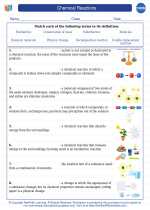CRISPR/Cas9
CRISPR/Cas9 is a revolutionary gene-editing technology that allows scientists to precisely modify the DNA of living organisms. CRISPR stands for Clustered Regularly Interspaced Short Palindromic Repeats, which are unique sequences of DNA that are used as a defense mechanism by bacteria against viruses. Cas9 is an enzyme that can cut DNA at specific locations. Together, CRISPR and Cas9 allow researchers to make targeted changes to the genetic code of an organism, with potential applications in medicine, agriculture, and biotechnology.
Mechanism of CRISPR/Cas9
The CRISPR/Cas9 system works by using a small piece of RNA to guide the Cas9 enzyme to the specific location in the genome that needs to be modified. Once the Cas9 enzyme is guided to the correct location, it makes a precise cut in the DNA. This cut can then be used to introduce new genetic material or to repair existing DNA sequences.
Applications of CRISPR/Cas9
CRISPR/Cas9 has the potential to revolutionize a wide range of fields, including medicine, agriculture, and biotechnology. In medicine, CRISPR/Cas9 could be used to treat genetic diseases by correcting the underlying genetic mutations. In agriculture, it could be used to create crops that are more resistant to pests and diseases. In biotechnology, it could be used to develop new and improved products, such as biofuels and pharmaceuticals.
Ethical Considerations
While CRISPR/Cas9 has the potential to bring about significant benefits, it also raises important ethical considerations. One of the main concerns is the potential for off-target effects, where the CRISPR/Cas9 system makes unintended changes to the genome. Additionally, there are ethical questions surrounding the use of CRISPR/Cas9 in human embryos and germline editing, as these changes could be passed on to future generations.
Study Guide
To study CRISPR/Cas9, it is important to understand the following key concepts:
- The mechanism of CRISPR/Cas9, including the role of CRISPR RNA and the Cas9 enzyme in gene editing.
- The potential applications of CRISPR/Cas9 in medicine, agriculture, and biotechnology.
- The ethical considerations and controversies surrounding the use of CRISPR/Cas9.
[Crispr/cas9] Related Worksheets and Study Guides:
.◂Chemistry Worksheets and Study Guides High School. Chemical Reactions

 Worksheet/Answer key
Worksheet/Answer key
 Worksheet/Answer key
Worksheet/Answer key
 Worksheet/Answer key
Worksheet/Answer key
 Worksheet/Answer key
Worksheet/Answer key
 Worksheet/Answer key
Worksheet/Answer key
 Vocabulary/Answer key
Vocabulary/Answer key
 Vocabulary/Answer key
Vocabulary/Answer key
 Vocabulary/Answer key
Vocabulary/Answer key
